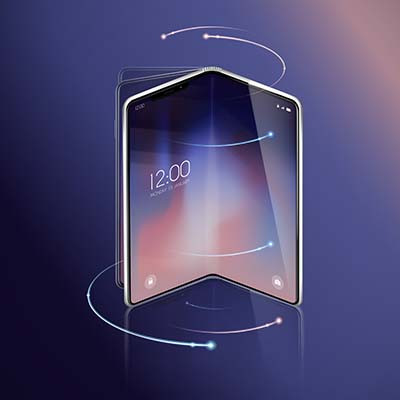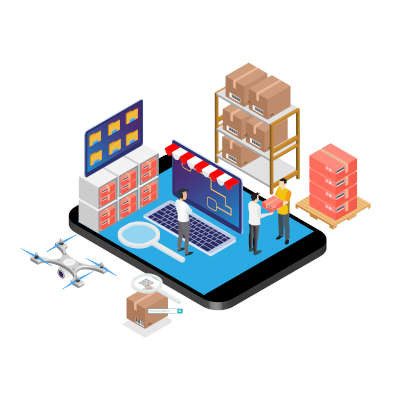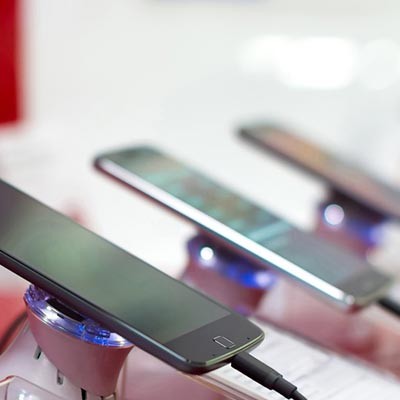SouthBridge Consulting Blog
How often over the past year or two have you gone to replace a device on your infrastructure, only to find that the price has increased or the device simply isn’t available? This is an issue with the current hardware shortage, particularly for business electronics. Since businesses depend on technology, it becomes critical that you understand how this shortage impacts your day-to-day operations.
For the past two weeks we have looked at some of the best phones and some that bring the most value. This week, we turned our gaze to a form factor that is only a couple of years old, but seems to be the future of mobile technology, foldable screens. The different form factors made possible by foldable OLED technology make the future of mobile devices more exciting. Let’s take a look at three of the top foldable devices right now.
Historically there have been several methods to transfer data from one system to the next, and while the cloud has rendered many of them irrelevant and unnecessary, that doesn’t mean they aren’t used by people looking to move data quickly. Many professionals still opt to use USB flash drives to keep certain data close at hand, but how at risk does this put the data on these drives?
Most of us take streaming media for granted. Whether you are streaming a movie on Netflix, binge-watching a show on Hulu, or using one of the growing number of streaming television networks to stream sports, shows, and news, there is quite a bit of interesting technology fueling your entertainment. Today, we thought we’d briefly go through some of the tech that makes these streaming services, and their millions of simultaneous streaming feeds, possible.
With such a heavy focus on remote work over the past year or so, if you have tried to procure equipment or technology solutions during this period, you may have noticed that it is much harder than usual to do so. The global chip shortage has led to many challenges for organizations, chief among them getting the parts needed to put together critical technology solutions. This opens up a whole other set of issues, though, particularly in regards to disruption of the supply chain.
The laptop is one of the great productivity tools in modern business. Their portability gives them immense value. There are some cons to using a laptop, however. One is the trackpad. While they have improved over the years, they are still not ideal, which is why you see many people who use a laptop for productivity bring along a wireless mouse. One of the biggest problems people run into is that they have a hard time with the click-and-drag feature on the trackpad and this makes working in certain programs maddening. Today, we have a tip to make this process much simpler.
Quick, off the top of your head, how many network switches are in use at your office? How many wireless access points? How many routers are past their warranty or no longer getting support?
That’s not a question most business owners are asked on a regular basis, and we don’t really expect you to be able to rattle off the answers. You should have all of that information documented though.
As the COVID-19 pandemic continues around us, many businesses have found themselves seriously reconsidering their business’ infrastructure, pondering the switch from onsite hardware to cloud-based options. While these hosted options can offer businesses relief from a costly hardware refresh, it is important to acknowledge that cloud computing may not be a one-size-fits-all panacea. Let’s take a closer look.
A lot of people never stop and consider how their data is saved. It’s something we all have, from old photos of our family vacations to the files kept on the server back at the office, but not many people know the actual mechanics behind it. Today, we wanted to go over these specifics, and hopefully make it clear why we always advocate for backup practices.
Once a mobile device outlives its presumed usefulness, the default assumption is that there is nothing left to do but dispose of it. However, before you do so, reconsider. There may be other ways that your device could show its utility. For today’s tip, we’ll review a few ways that an aged-out smartphone or tablet can still be handy for you (even in the office)!
Data loss is no joke - and we’ve heard plenty of stories from people who have experienced it firsthand, when personal or business data was lost. We appreciate everyone who shared their experiences with us, and allowed us to post them here. First, we’ll tell the story of someone who learned something in college that wasn’t in the syllabus.
Don’t forget to share your own stories with us in the comments!
Make no mistake about it, Huawei is one of the largest technology companies in the entire world. It employs over 200,000 people and in 2018 saw revenues of over $100 billion. Over the past few years, their devices have been pushing the boundaries of what is possible in tech all while being relatively unavailable to one of the major technology markets in the world, the United States. The fact is that outside the U.S., Huawei is a major player.
No matter how hard some organizations may try, the technology solutions that a business leverages simply aren’t meant to last forever. You may have noticed that some of your systems are less effective than they once were, and that your competition seems to be playing with a different set of rules. Sounds like it’s high time you implemented a few upgrades.
With the smartphone market losing ground for the first time in its short history, many of the manufacturers you’ve come to know are either non-factors in the current market, or don’t even produce smartphones anymore. With new demand growing every year, new manufacturers such as OnePlus and Xiaomi are primed to fall in line behind Samsung and Apple.
If you’ve been in business for a while, there are devices on your network that see little to no use. Even for the most frugal business, due to the fact that technology eventually winds up being arbitrary thanks to the continued development (and deployment) of more powerful solutions, there will always be situations where you have devices that do nothing but take up space. You can reduce the chances of this happening by finding the right IT for the job the first time, while sparingly implementing only IT solutions that will provide a return on your investment.
Children are the future, as the saying goes, so do we really want the future to be taught using tools from the past? While some schools are still using technology that better belongs in the 20th century, others are embracing innovation and teaching in ways that better translate to the “real world.” Let’s take a look at how our evolving technology is transforming the classroom and explore some ways to get it to more students.




















